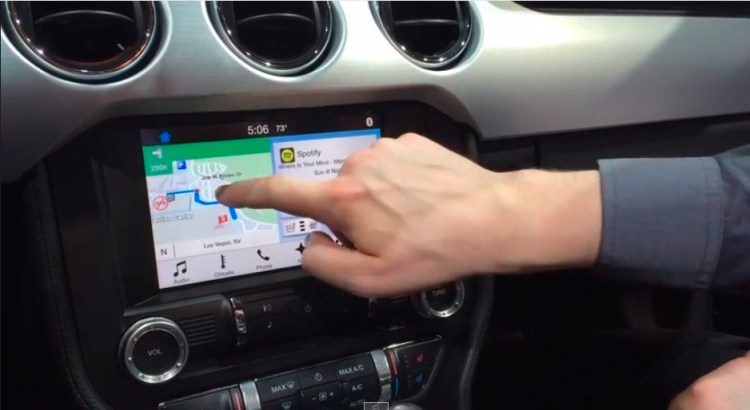LAS VEGAS — With all the hype surrounding Apple and Google’s entrance into the connected car software world, you may have glossed over some of the cool tech in other venues, like the connected cars from Ford.
At the 2015 International CES, we sat down in a new Ford Mustang with Christopher Borh, one of Panasonic’s Human Machine Interface (HMI) engineers who helped develop the Sync 3 head unit for Ford’s line of connected vehicles. Sync 3, which is expected to roll out in 2016 model year vehicles, is the third generation in-dash media system from the automaker. However, this year Sync will face increasing competition from a slew of third-party media systems offering support for Apple’s CarPlay and Google’s Android Auto platforms.
Bohr told us that the key updates for Sync 3 were speed, ease of use, and improved voice functionality. Eliminating lag was a key focus for Ford, and as you can see below, the company has made great strides in that area.
One thing to note about the video below: The demo vehicle seems to reboot the Sync interface at about 2:42. Bohr assured me that this wasn’t anything as dramatic as a system crash — rather, the system is designed to shut down electronic peripherals about 30 minutes after the engine is turned off to keep the starter battery from draining.
We were impressed with the way Sync understood some voice commands. For instance, asking the system to play music by the “fab four” was all that was needed for music from The Beatles to start playing. The reason? The engineers have included popular nicknames, which should really help when it comes to using voice to access the likes of constantly evolving artists like Sean Combs (aka Puff Daddy, aka P. Diddy, aka Diddy).
Ford’s Sync makes use of many apps, too. Some are based on the content on your smartphone, while others are native to the car’s system. The company is certainly delivering a lot of content and interface options to the user, but we couldn’t help but wonder how the person driving a car was supposed to safely navigate through those app screens while operating the vehicle in traffic.
That said, Sync 3 is pretty robust from what we’ve seen. Of course, it’s not nearly as flashy as the 17-inch in-dash media player found inside a Tesla Model S — but then again, you can get a nicely equipped Sync 3 integrated Mustang for less than half the price of a Model S. Check out our hands-on in the video below, and let us know what you think of Sync 3 in the comments section.
VentureBeat's mission is to be a digital town square for technical decision-makers to gain knowledge about transformative enterprise technology and transact. Learn More

